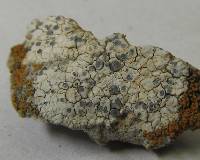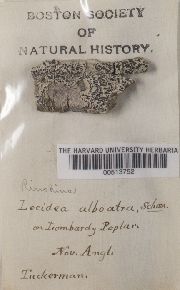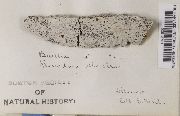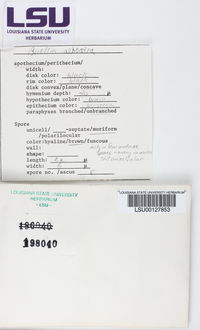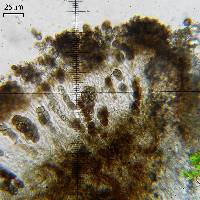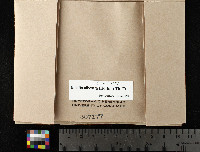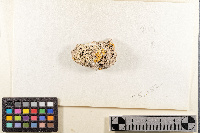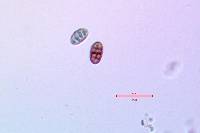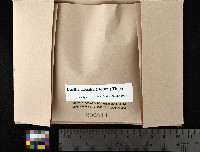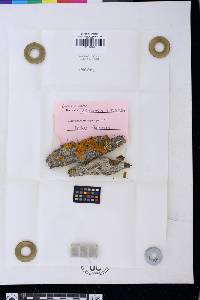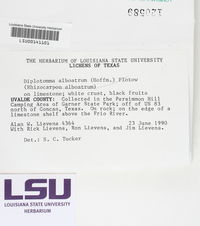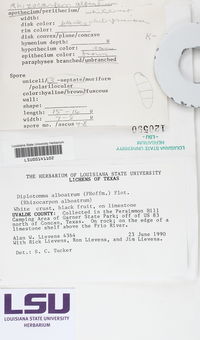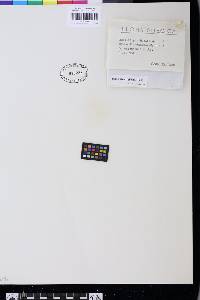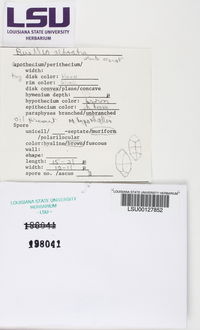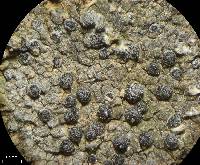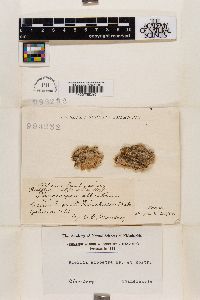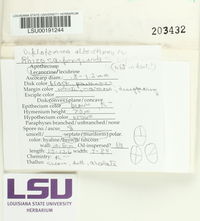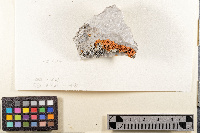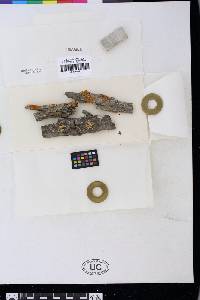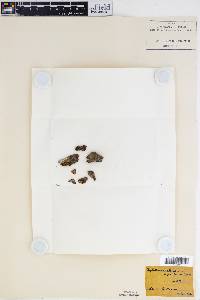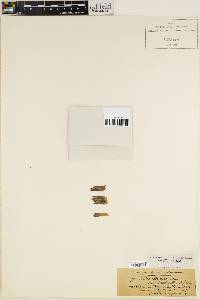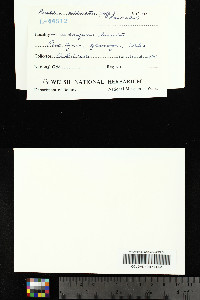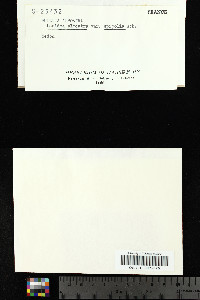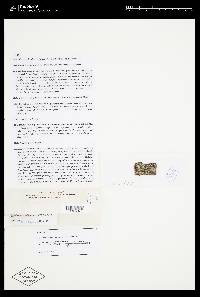
Consortium of Lichen Herbaria
- building a Global Consortium of Bryophytes and Lichens as keystones of cryptobiotic communities -
- Home
- Search
- Images
- Species Checklists
- US States: O-Z >
- US National Parks
- Central America
- South America
- US National Parks
- Southern Subpolar Region
|
|
|
|
Family: Caliciaceae
[Abacina alboatra (Hoffm.) Norman, moreBuellia alboatra (Hoffm.) Th. Fr., Buellia alboatra f. alboatra (Hoffm.) Th. Fr., Buellia alboatra f. muscicola Cretz., Buellia alboatra var. alboatra (Hoffm.) Th. Fr., Buellia alboatra var. ambigua (Ach.) Th. Fr., Buellia alboatra var. athroa (Ach.) Th. Fr., Buellia alboatra var. caricae (Bagl.) Zahlbr., Buellia alboatra var. epipolioides J. Steiner, Buellia alboatra var. pulchra (Servít) Servít & Cern., Buellia alboatra var. subochracea Zahlbr., Buellia alboatra var. vulgata Th. Fr., Buellia alboatra var. zapotica Körb., Lecidea alboatra (Hoffm.) Chevall., Lecidea alboatra f. alboatra (Hoffm.) Chevall., Lecidea soreumidia Stirt., Lichen alboater Hoffm., Rhizocarpon alboatrum (Hoffm.) Anzi, Rhizocarpon alboatrum var. alboatrum (Hoffm.) Anzi, Rhizocarpon soreumidium (Stirt.) A.L. Sm., Verrucaria alboatra (Hoffm.) Hoffm., Verrucaria alboatra var. alboatra Kremp.] |
Nash, T.H., Ryan, B.D., Gries, C., Bungartz, F., (eds.) 2007. Lichen Flora of the Greater Sonoran Desert Region. Vol 3. Thallus: crustose, flat, continuous or rimose, occasionally flaking-off and in parts becoming subsquamulose, thin to thick; prothallus: sometimes present, black surface: chalky white to ochraceous, pale gray or pale brown, esorediate medulla: white, with calcium oxalate (H2SO4+ needle shaped crystals) Apothecia: lecideine, but initially often with a thalline collar (pseudolecanorine), initially immersed, later ±sessile, abundant, 0.3-1(-1.5) mm in diam., usually <0.5 mm disc: black, often pruinose with white pruina consisting of calcium oxalate crystals, flat to ±convex margin: black, moderately to poorly developed, excluded in strongly convex apothecia but in young apothecia with a thalline veil or rim or with thalline granules proper exciple: <50 µm thick, often poorly developed and frequently inspersed with calcium oxalate crystals (H2SO4+ needle shaped crystals), lacking secondary metabolites; differentiated into a thin, dark brown outer part without carbonized cells (HNO3-), and a pale central part, transient with the hyaline to deep brown, <190 µm thick hypothecium (HNO3-) epihymenium: brown, pigmentation continuous with the outer exciple (HNO3-) hymenium: hyaline, not inspersed with oil droplets, 60-110 µm tall; tips of paraphyses: ±6 µm wide with distinct apical caps asci: clavate, Bacidia-type, 36-63 x 15-17 µm, 8-spored ascospores: soon brown, submuriform, with 3 transversal and usually few longitudinal septa, thus 6-8-celled in optical section, ellipsoid, (13-)14.7-[16]-17.3(-20) x (6.5-)7.5-[8.3]-9.1(-10) µm (n=224), walls and septa lacking uneven thickenings, proper wall c. 0.3 µm thick, perispore c. 0.4 µm thick; ornamentation: rugulate Pycnidia: rare, immersed, with uppermost part protruding, wall pigmented in upper part conidia: bacilliform, 6-10 x 1 µm Spot tests: thallus and medulla K- or + yellow turning red (crystals), P- or + yellow-orange, C- fluorescence: UV- iodine reaction: medulla not amyloid, or rarely amyloid Secondary metabolites: absent or norstictic acid and connorstictic acid in the medulla. Substrate and ecology: epilithic, on calciferous and siliceous rocks, bark and lignum close to the sea-shore as well as at high elevations, usually at N-facing, overhanging surfaces; at young stages often parasitic on various lichens, particularly Caloplaca spp. World distribution: Africa, Asia, Australia, Europe, North America, and South America Sonoran distribution: montane localities in Arizona, southern California coastal mountains and the Channel Islands, Baja California (Guadalupe and Cedros Islands), and Sinaloa. Notes: Buellia alboatra is characterized by its brown, submuriform, and relatively small spores, and small, often pruinose apothecia that are usually surrounded, at least initially, with a thalline collar. The species is similar to Buellia venusta and B. subdispersa, but these mainly differ by having 3-septate spores. It is often placed in the genus Diplotomma (e. g., Esslinger 1997, Purvis 1992). Norstictic acid containing specimens are often regarded as a separate taxon, Buellia chlorophaea (Diplotomma chlorophanum). Also, specimens growing on Xanthoria elegans and Caloplaca teicholyta have been designated as separate taxa, as Buellia nivalis (Diplotomma nivale) and Diplotomma murorum respectively. |
|
|
|
Powered by Symbiota






